If you purchase an independently reviewed item through our site, we earn an affiliate commission. Read our affiliate disclosure.
Varroosis of honey bees is a commonly known and widespread disease. It also goes by other names such as varroatosis or Varroa mite infestation. Its main cause is the Varroa destructor or Acari Varroidae mite. This is a mite that targets the honey bee in all its life cycle stages, affecting many species of bees. Varroosis Treatment becomes necessary when beehives become infested with mites.
Severe cases of varroa mite infestation can lead to colony collapse. The mites suck blood from the bees and spread bee viruses and diseases. Eradication efforts have yielded great results, though it has never been possible to completely eliminate varroosis from invested hives. Fortunately, it has helped curb possible spread and eventual devastation of other bee colonies. Beekeepers employ chemical, biological, biotechnical and even homemade methods to counter this invasive mite.
About Varroa Mites
Varroa mites are believed to have originated from the Far East where its main host is the Asiatic honey bee. Earlier research suggests it was first introduced to the US in the 1950s. It has since spread to other countries globally, with the exception of Australia where no single case of the mite has been reported. The mite spread rapidly as a result of importation of queen bees from areas that are infested. Foraging bees can also introduce the mites to healthy colonies during pollination.
There are about 18 different species of the Varroa mite. The Varroa destructor and Varroa jacobsoni are closely related and are common in the Asian honey bee. Varroa destructor however targets the European honey bees and is the only Varroa mite that can reproduce within the European honey bee colonies.
The economic losses resulting from varroosis is huge given the fact that the mite is strongly adaptive to treatments and can easily spread from one hive to the other. It is capable of thriving on both brood and adult bees, sucking the hemolymph from adult bees. The ultimate effect is compromised immunity making the bees susceptible to diseases.
All stages of the varroa mite rely solely on the honey bee hemolymph for sustenance. This results in open wounds on the bees. They have a life span of up to 5 days outside the beehive depending on the prevailing weather conditions.
Female varroa mites can live for 2 months on average during summer months and 5 months during winter. You can easily see the female varroa mites once varroosis treatment is completed. Female mites are reddish brown and boast an elliptical shape. It also has 4 pair of legs and moves quickly inside the hive. The mite with a spherical body shape and with whitish color is the male varroa mite.
Instances where the mite can easily be seen on adult bees imply heavy infestation of the mites. One way to determine the severity of varroa mite infestation, is through the evaluation of the number of mites that fall naturally on the screened bottom board, sometimes referred to as the diagnostic board.
Symptoms of Varroosis
It is quite easy to tell when varroa mites are present in the beehive. Some of the common signs of varroosis include the following:
- The mites can be seen on the bodies of the adult honey bees.
- Smaller or tiny bees emaciated and weakened. Adult bees with decreased weight are a common sight.
- The number of drone bees is significantly reduced.
- There is an increase in drone infertility.
- Low water levels, carbohydrate, and protein levels in infected bees.
- Brood completely neglected by those responsible for tending to them.
- Presence of discarded pupae at the entrance of the beehive.
- Malformed and discolored drones and worker bees are a common signs of the varroa mite infestation.
- Bees with deformed wings can be seen.
- Bees that have lost the ability to fly and are generally restless.
- Weakened bee colonies with less population. This can be attributed to the fact that forager numbers have substantially declined.
- Instance of scattered brood is a clear indication of an infestation of the mites.
- You can feel a stench of dead brood within the hive.
- Instance of abnormal swarming and replacement of queen.
- Reduced life span of adult bees by about 50 percent.
Varroosis Diagnosis
Periodic inspection of beehives for varroosis is important since it is not quite easy to tell the progression of the disease. You need to conduct regular diagnosis which includes:
- The number of the varroa mites that fall on the bottom board or diagnostic board should be checked.
- Since the male brood is the most affected by the mites, ensure they are checked for varroa mite presence.
- Evaluate the adult bees to find out if you can see any parasites on them. Any mite visible to the naked eye will indicate a heavy infestation by the mites.
- You can use stirred alcohol to find out the varroa mite level infestation within the bee colony. Dip the adult bees in alcohol and stir so as to separate the mites from the honey bees.
- The powder sugar test also helps identify infestation levels of varroa mites. Sprinkle powder sugar on adult bees placed inside a jar. You can then shake it causing the mites to fall off through a mesh placed on the jar opening.
Review of Varroosis Treatment Products
7. Basalt Varroosis Prevention and Treatment Tablets
Smoke treatment is one of the measures that are effective in countering varroa mites. The 25 tablets that come with this product are specially formulated to target the invasive varroa mites. Each tablet contains Thymol and Amitraz as the main ingredients. They are meant for diagnosing and combating the Varroa destructor.
The tablet should not be used when the honey produced is intended for human consumption. It is applied through fumigation and this should occur when temperatures are above 10 degree Celsius. Individuals that are hypersensitive to any of its ingredients should avoid using it.
Each single tablet is sufficient for the fumigation of a single honey bee colony. The method of use involves holding a tablet with the tongs, setting it on fire and placing the smoldering tablet inside the beehive. This should be placed on the bottom board and left for about 20 minutes. Ensure all hive entrances are closed until the tablet is fully consumed.
The Basalt Varroosis Prevention and Treatment Tablets are an effective method of treating varroa mites, targeting only the mites on the adult bee body. It may not reach out to the developing mites inside encrusted brood. You should apply fumigation twice in spring and about three times during autumn. This is the time when there is a small amount of encrusted brood within the beehive. The encrusted brood should be cut off during honey production period.
Perform fumigation after all stock of honey intended for human consumption has been harvested. You should also treat hives in the evening so as to guarantee all adult bees are treated since all bees are back in the hive after foraging at this time.
This product remains useful for two years if not opened and stays useful for 24 days from the day it is opened for use. It should be kept safe in a tightly closed container away from light and moisture. Temperature levels in the store should not be more than 25 degrees Celsius as well. Keep it away from children and it should not be used after the written expiry date has elapsed.
Check Price
6. Amitraz Plus Strips Varroa Mite Treatment
The use of the Amitraz Plus Strips as a varroosis treatment option for countering varroa mites has been in use for a while. Beekeepers are increasingly adopting this method, since it not only targets adult mites but is safe for the bees and humans as well. The product comes with 500 strips with each containing 6.75mg or Amitraz and 0.8mg of Thymol.
These strips for varroosis are meant for targeting the adult forms of the varroa mites. This therefore means it may not be possible for it to eliminate the developmental stages of the mite safely enclosed in encrusted brood. Fortunately this will be eliminated later on.
These strips work through its strong acaricidal effect. Strips should remain inside the hive for a period of between 3 to 30 days depending on the number of brood. This should ensure all mites that emerge from the brood are completely eliminated.
Treat honey bee colonies during spring once the first inspection of the hive has been completed. Preferred period is also upon completion of honey harvesting during summer and autumn. Two strips are sufficient for treatment of 10 to 12 nesting frames. A single strip will treat small colonies or nucleus boxes. In this case place the single strip at the centre of the nest.
For weak bee colonies, one strip is placed between the 3 and 4 honeycombs. Conversely, strong colonies require a strip between 3 and 4 honeycombs but a second strip should be positioned between 7 and 8 honeycombs. It is also worth mentioning that strips should strictly be opened at the bee garden prior to use.
The beekeeper should follow recommended guidelines when using these strips and ensure strips that are not in use are kept in a dry and dark place. The strips should also be kept away from children, direct flames, and heaters. Ideal storage room temperature for the product is from 0 to 30 degrees Celsius. These strips for varroosis treatment shall remain useful for a period of 2 years from date of manufacture thus guaranteeing maximum protection for your bee colonies.
Check Price
5. Bayvarol Varroa Mite Treatment
This is one of the top products recommended for varroosis treatment. It is delivered as a 40 piece product, packaged in two packs and is both a varroa mite diagnosis and treatment choice for most beekeepers. The Bayvarol Strips are an excellent choice since it is made up of Flumethrin targeting the varroa mites. The strips are a parasiticide specially formulated with each of the strip being made up of 3.6mg of Flumethrin.
One of the main effects of varroa mite infestation is the huge decline in honey production as a result of weakened bee colonies. Proper diagnosis and treatment of varroosis makes it possible for the beekeeper to identify infestation levels before treatment. Early diagnosis and treatment will mean the activities of the mites are cut short early enough. These strips serve two purposes: assisting in the diagnosis of varroa mites, and helping treatment of varroa mite infestation. It is also friendly to the bees, with a special bias on the mites.
The product offers top level diagnosis and treatment of varroa mites. It is mainly distributed by the bees themselves through physical contact. It is ideally formulated to guarantee convenient handling with the strips being sufficient for a single treatment. This is unlike other products that only target the mites on adult bees. This product delivers a longer lasting effect guaranteeing that the mites that later hatch from caped brood cells are completely eliminated. It is capable of working for 8 weeks from first treatment and thus re-infesting mites are eliminated as well.
Proper use of the product is highly recommended by the manufacturer. It should never be used during honey period. Proper storage practices should also be exercised. Keep the product in storage rooms with adequate spacing, away from moisture or water. It should also be kept away from direct sunlight or flames. And just like any other chemical store it away from reach of children. Furthermore, ensure you adhere to local regulations while handling the product. Proper storage will ensure the product remains useful for a minimum of 2 years from date of production.
Check Price
4. Oxalic Acid Pure Powder for the Treatment of Varroosis of Bees
Oxalic acid is by far one of the best products for curtailing the activities of varroa mites. It is best suited for broodless colonies with most beekeepers finding it one of the best choices for flash treatment. It is ideally a naturally occurring compound made from plants such as vegetables, seeds, leafy greens, and nuts. Oxalic acid is not only effective by itself but also much cheaper when compared to other products. The Oxalic Acid Pure Powder is an excellent formulation targeting the invasive varroa mites. The product comes as a 100g pure powder for varroosis treatment. This translates to 50 doses of the product. The package comes in five smaller packages with each weighing 20 grams making up the overall 100 gram package.
All that is required during treatment of the mites is the powder and an oxalic acid vaporizer or fogger. A solution of the oxalic powder needs to be prepared before use. This should be applied to the hive interframe spaces. Oxalic acid will target the mites on adult bees leaving out the ones inside capped brood cells. These can be eliminated on later applications.
Oxalic acid varroosis treatment offers more benefits asides killing the varroa mites. It acts as a disinfectant riding the hive of parasites, mold, and other pathogens. The solution is made by mixing warm water with the powder, making a 2% solution. This means 1 litre of water is mixed with 20g of the oxalic powder.
A 5 to 10ml solution is sufficient for application to a single interframe space. Best time to use oxalic acid is when honey has been harvested. It is therefore preferred during spring and fall. You can apply it three times during spring with intervals of a week. Application should also be carried out when temperatures are not less than 15 degrees Celsius.
Another way of applying the powder is by mixing pre-cooked sugar syrup that has a concentration of 20% with oxalic acid with a concentration of 3.7%. The solution can be applied to the hives only once. You can also mix 0.5cups of water with 7g of oxalic acid, and 100g of sugar.
Check Price
3. Amipol T Prevention of Varroosis
The Amipol T for varroosis strips come in 2 and 5 packs. The 2 pack is made up of 20 strips each immersed in a solution of thymol and amitraz. This is specially formulated to target the adult form of the varroa mites. The 5 pack is made up of 50 strips containing amitraz and thymol as well. The strips are also immersed in a solution of the two potent ingredients targeting the adult varroa mites.
The best time to use Amipol T is during summer/autumn months once honey has been harvested. Spring is also an ideal season to use the strips especially after the first inspection of the beehive. The strips should be strategically placed within the hive, that is, two strips for every 10 to 12 nesting frames. A single strip is enough for small bee colonies, that is, 6 frames or less. This should be placed at the centre of the nest.
Make a hole on one of the strip ends and insert a pin before using it to position the strip at the middle of the nest. Remember, the strips should remain within the beehive for a period of between 3 to 30 days even though this will depend on the number of brood.
These strips are effective and it is important to adhere to the recommended guidelines for use. Closed package should only be opened in the apiary. If not in use, keep the product in a dark place and away from children. It should also be away from open fire and heating devices. Preferred storage temperature is between 0 to 30 degrees Celsius with the product lasting for 2 years from date of manufacture when properly stored.
This product works as an acaricide targeting both adult forms of varroa mites and the emerging mites from capped cells. The fact that it is kept for a longer period within the hive means it can kill even the mites that emerge from capped brood cells. Thymol and Amitraz are excellent ingredients that target varroa mites yet are safe for the honey bees. They should however be used when no honey is being produced for human consumption.
Check Price
2. Bipinamite to Combat Varroosis of Bees
This transparent liquid containing 12.5% of Amitraz as its primary ingredient, is a special formulation targeting the invasive varroa mites. It boasts certain odor and will work as systemic acaricide that discriminately annihilates the varroa mites. The collective name Bipinamite refer to specific compounds that have moderate toxicity to any warm blooded animal. It is safe for the bees and will never affect their normal activities such as production, growth, or overall condition.
It is a formulation that combats varroosis and is applied as an aqueous emulsion. The mixture is attained by mixing 2 liters of water against 1ml of the liquid. This solution will then be used to treat the mites. It will work best during a working day and when temperatures are more than 0 degrees Celsius. The small drop of the emulsion should be applied on bees within the interframe space.
As for seasonal timing, apply the emulsion during autumn when the bee colony has the least number of brood. You can conduct treatment in two phases. Begin your first treatment once honey harvesting has been completed. The second treatment should then follow before the colony is staged for wintering. Remember 10ml of the solution is sufficient for each bee street. Bees should be treated before wintering since during winter bees stay within the colony with little outside movement making them more susceptible to the mites. Heavy varroa mite invasion during winter will in most cases end in colony collapse.
Micro-testing should be carried out as a safety measure for those with many hives to spray. The test should be limited to a few bee colonies that are then monitored based on the drug’s efficacy and how the bees respond to the drug. Small colonies should never be treated with this solution since excessive use will harm the bees. It is also important to adhere to local regulations while using the drug. You may consider including a veterinarian while conducting the micro-testing. This should take at least 24 hours monitoring bee behavior.
Proper storage is highly recommended by the manufacturer since this product is highly sensitive. It can stay in good condition for up to 3 years and that will depend on how well it is stored. Keep it in a dry, dark and cool place and under temperatures of between 0 to 30 degrees Celsius.
Check Price
1. Taktic Amitraz
Taktic Amitraz is ideally an acaricide formulated to discriminately target the varroa mites. It works as a systemic and contact acaricide and contains Amitraz as its main ingredient. Its name is derived from the term Tactics, referring to compounds that have moderate toxicity to any animal that is warm blooded. It is safe for the bees and will never harm it during all its stages.
Taktic Amitraz is available in 0.5ml (10 pcs pack) quantity and Glass bottle 50 ml.
This product is applied as an emulsion with 5ml of the product being mixed with 100ml of kerosene. This will be sufficient for 50 bee colonies. The same proportion of 5/100/50 should be used when calculating what to apply depending on the bee colony size. For instance, 50ml is enough for 500 bee colonies.
Taktic Amitraz is applied in the form of smoke, meaning you require a Varomor device when you opt to use smoke treatment. Another alternative way of applying the product is through the use of a syringe whereby each individual bee is treated with a droplet of the emulsion.
The best time to use Taktic Amitraz solution is during fall when we have minimal number of brood. The temperature should also be above 0 degrees Celsius. It is recommended that its efficacy is checked before mass application. This should involve testing it on 1 to 2 families in 1 to 2 streets then monitoring its effect on the bees in terms of safety and therapeutic effect. You can involve a veterinarian when conducting prior testing since an overdose of the drug can harm the honey bees. It should also be applied when honey collection has been completed and before the preparation honey bee families for wintering. This will ensure bees do not enter winter with varroa mites sucking life out of them.
It is also worth mentioning that small bee colonies of 4 to 5 streets should never be subjected to the treatment of Taktic Amitraz.
This product should be stored in a dry and dark place when not in use. Room temperature is also ideal for the product and its expected efficacy is 2 years from date of manufacture.
Check Price
Conclusion
A proper understanding of varroa mites starting from development to how they attack the honey bees can help counter varroosis. This parasitic mite is easily transmitted from one bee to the other and from one hive to the other through contact. This is particularly common when worker bees venture outside while foraging. Drone bees can also spread the mites when they freely enter other hives during robbing. The beekeeper may also spread the disease unknowingly while transferring brood combs between hives or different colonies. Varroosis can be countered through the various methods discussed above, and more. There is a wealth of information on this blog on how to counter varroosis, and it’s worth checking out.
It is also worth mentioning that approved varroosis treatment products will vary depending on your locality. Furthermore, exercise caution while using any recommended varroosis treatment methods. Improper use of any product might make the mites resistant to the product and can also contaminate honey meant for consumption. Proper timing is also most important when using varroacides.
References
- https://www.apidologie.org/articles/apido/abs/2006/01/M6010/M6010.html
- https://beeinformed.org/2018/09/26/the-signs-of-mite-damage-how-to-identify-progressed-varroosis/
- https://teca.apps.fao.org/teca/en/technologies/8416
- https://nationalbeeunit.com/index.cfm?pageid=93
- https://www.ars.usda.gov/pacific-west-area/tucson-az/carl-hayden-bee-research-center/research/varroa/varroosis/
What are your thoughts on these varroosis treatment options? Leave a comment below and let us know.
 BeeKeepClub Resources and Guides for Beekeepers
BeeKeepClub Resources and Guides for Beekeepers

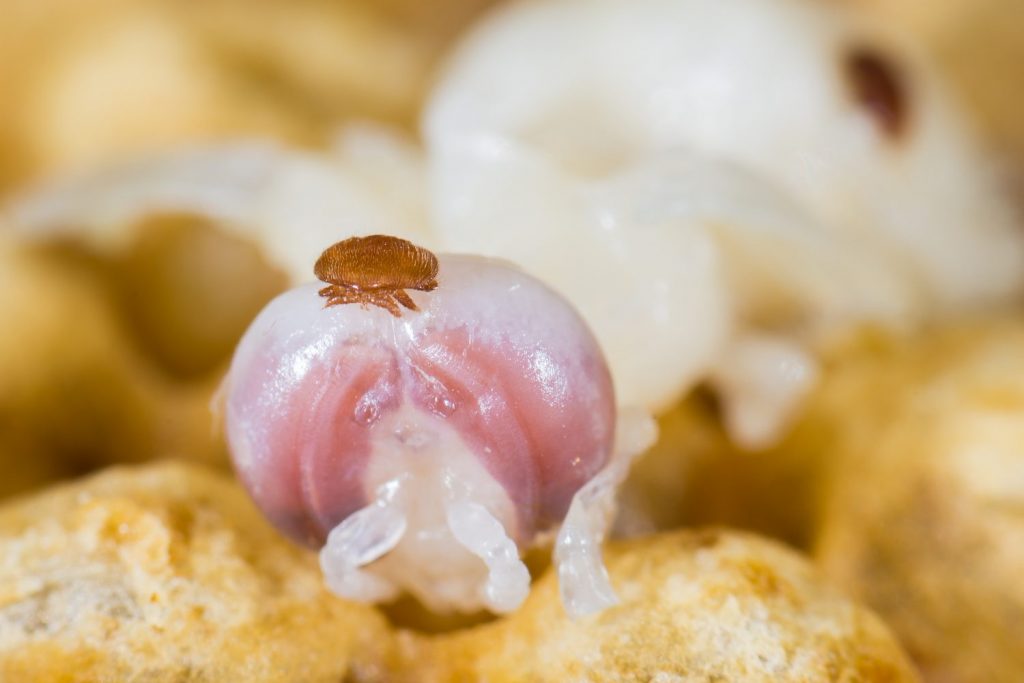
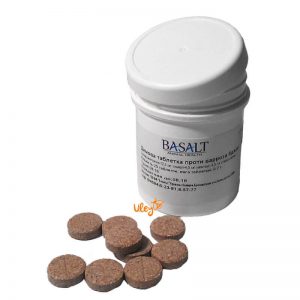
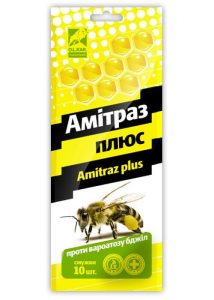

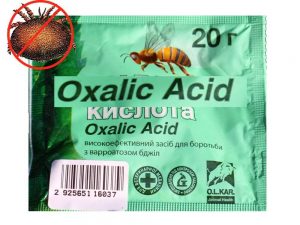

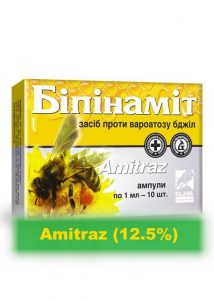

[…] of honey, and a lot of peace. The hive design is ideal for raising strong colonies that can manage varroa mites, pests, diseases, and many other factors that cripple […]
[…] of honey, and a lot of peace. The hive design is ideal for raising strong colonies that can manage varroa mites, pests, diseases, and many other factors that cripple […]